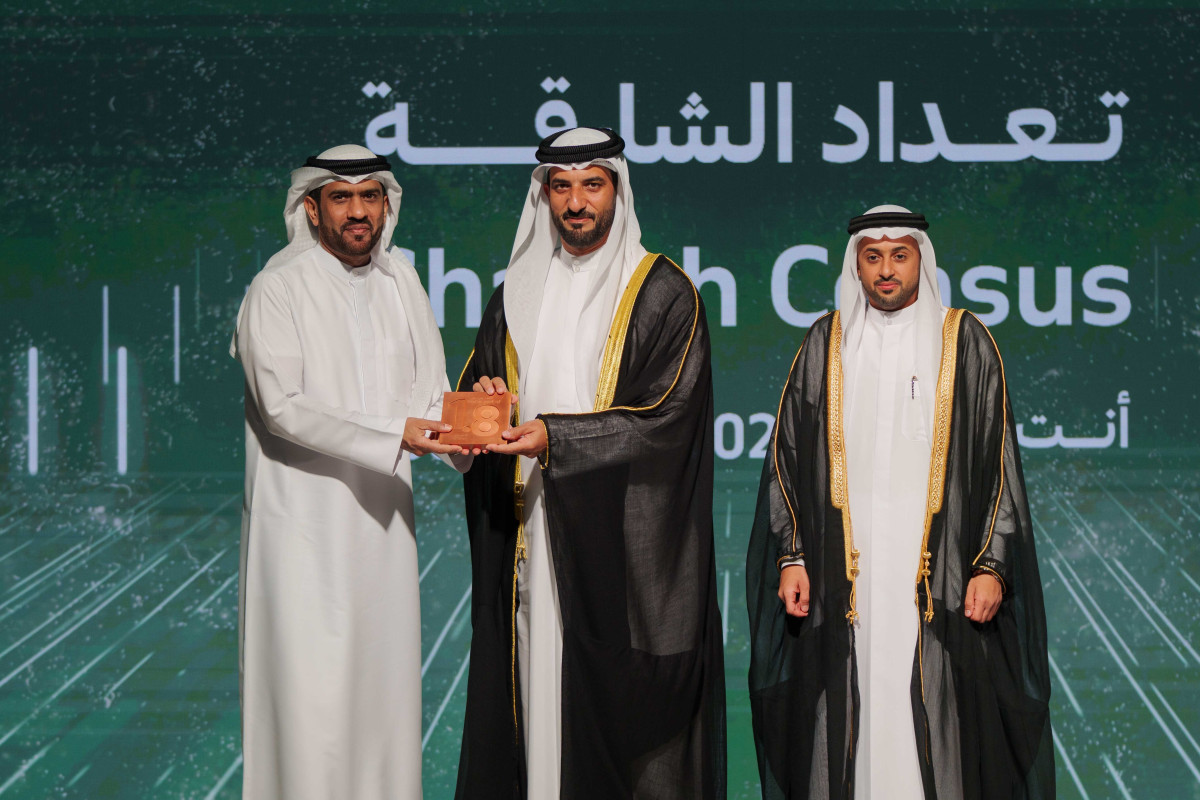Sharjah, UAE— The emirate of Sharjah has seen a 22 percent growth in population to 1.8 million inhabitants, as against 1.4 million in 2015, according to the results of Sharjah Census 2022.
The findings of the census were unveiled by Sheikh Sultan bin Ahmed bin Sultan Al Qasimi, deputy ruler of Sharjah on Wednesday, announced by the Department of Statistics and Community Development in Sharjah (DSCD).
The census has indicated a healthy population distribution in the main city and various regions in Sharjah.
Sharjah City is home to 1.6 million individuals, followed by Khorfakkan with 53,000, Kalba with 51,000, Al Dhaid with 33,000, Al Hamriyah with 19,000, and Al Madam with 18,000 residents.
The population of Dibba Al-Hisn has grown to 15,000, while Al Bataeh is home to 7,000 individuals, and 6,000 live in Mleiha.
The census report also states that 61 percent of the emirate’s population is part of the active workforce, offering a positive outlook on the ever-increasing opportunities to work and invest in Sharjah’s fast-growing and diversified economy.
The working population in Sharjah has also increased by 22 percent since the last census report was published, increasing from 856,000 in 2015 to 1.1 million in 2022.
The number of students enrolled in various educational institutions across Sharjah also increased by 23 percent, from 253,000 to 310,000.
The announcement ceremony held at the Al Jawaher Reception and Convention Centre was attended by Sheikh Mohammed bin Humaid Al Qasimi, Chairman of DSCD, Sheikh Sultan bin Abdullah bin Salem Al Qasimi, Director of DSCD, heads and directors of various local government bodies.
During the ceremony, the deputy ruler of Sharjah honoured 50 entities from the government, semi-governmental, and private sectors that contributed to the success of the Sharjah Census 2022, which coincides with the 10th anniversary of the establishment of DSCD.
The approximately 1.8 million individuals residing in Sharjah comprise 208,000 Emirati citizens, including 103,000 males and 105,000 females. The resident population of expatriates stands at 1.6 million, including 1.1 million males and 500,000 females.
At the heart of Sharjah’s socioeconomic success is a young and highly skilled workforce that actively contributes to the development and advancement of various sectors.
Around 914,000 individuals aged between 20 and 39 make up the emirate’s largest segment, accounting for 51 percent of the total population. Following closely, the age group of 40 to 59 years came in second with 443,000 individuals, representing 24 percent.
Meanwhile, the age group of 19 years and younger, totalling 399,000 individuals, constitute 22 percent of the population, and those over 60 years of age represent 3 percent of the total population of 55,000 individuals.
The census results also revealed that the percentage of students in the emirate has grown by 23 percent, reaching 310,000. The number includes 249,000 in private educational institutions and 61,000 in public education.
The numbers indicate an incremental growth of Sharjah’s population, workforce and student figures.
These findings not only underscore the emirate’s commitment to growth but also underscore its efforts in fostering diversity, inclusivity and integration among various nationalities who call Sharjah home and play a vital role in shaping the future of the emirate.
The total number of occupied housing units in the emirate has reached 244,000, including 63,000 houses, 7,000 multi-storey buildings, and 38,000 other types of structures.
The number of households in the emirate stands at 340,000, including 42,000 Emirati families and 245,000 expatriate resident families. Additionally, there are 53,000 collective households.
The figures indicate Sharjah’s steady urban population growth, reflecting the emirate’s success in providing diverse and suitable housing for all segments of society, embracing the population’s cultural and social diversity.
It includes families from various nationalities and backgrounds. It also reflects Sharjah’s commitment to improving the quality of life for its residents.
DSCD revealed that the Sharjah Census 2022 preliminary results were based on data collected from 10 towns, 97 suburbs, 356 districts, and 7,961 residential blocks to ensure the accuracy and comprehensiveness of the census process, which utilised the latest technologies and methods for data collection and analysis, which assist in planning and developing services and projects that meet the needs of the emirate’s population.
Commenting on the results, the Chairman of DSCD said, “We are delighted to mark the department’s decade-long contributions to Sharjah and the UAE with the unveiling of the Sharjah Census 2022 report’s preliminary results. The department’s efforts are not merely statistical data collection.”
The census results reflect how Sharjah is a vast home for a diverse community that represent myriad cultures and nationalities. The emirate serves as a vital hub of economic, cultural and scientific activity.








